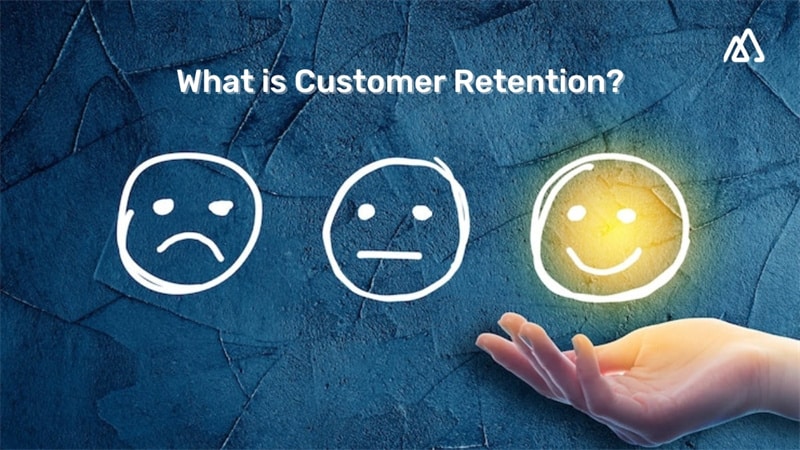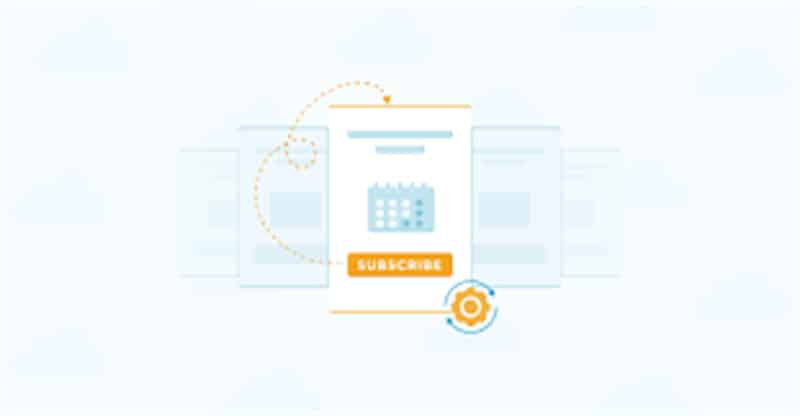
Top B2B customer retention strategies: focus on customer onboarding, provide a quick resolution, prevent customer drift, and personalize experiences.
Customer retention is one of the most important aspects of running a successful B2B business.
Keeping an existing customer is much cheaper (five to 20 times) than getting a new one, and repeat customers tend to spend 67% more over time than new customers.
But how do you keep your B2B customers happy and loyal? What are the best strategies and tools to improve your customer retention rate?
This article will answer these questions and provide a comprehensive guide on retaining your B2B customers in 2023 and beyond.
What Is Customer Retention and Why Does It Matter?

Customer retention refers to the ability of a business to keep its existing customers over a period of time. It is measured by the customer retention rate (CRR), which is the percentage of customers who stay with a business over a given period.
For example, if a business has 100 customers at the beginning of the year, gains 20 new customers, and loses ten customers by the end of the year, its CRR would be [(100 – 10) / 100] x 100 = 90%.
The ideal CRR depends on your industry, business model, and growth stage. However, a general rule of thumb is that higher CRRs are better than lower ones. According to a report by Mixpanel, the average CRR across industries is 61%, while the top quartile has a CRR of 79% or higher.
Customer retention matters because it indicates how satisfied and loyal your customers are with your products or services. It helps you build long-term customer relationships, leading to repeat purchases, upsells, cross-sells, referrals, testimonials, and feedback.
It also affects your profitability. A study by Bain & Company found that profits can grow by 25% to 95% when customer retention is boosted by only 5%.
One example of a B2B company that understands the importance of customer retention is Supportbench, a customer support software that helps businesses deliver exceptional customer service.
Supportbench Named 2023 Industry Leader by G2, a leading software review platform, based on its high customer satisfaction and market presence scores.
Supportbench also boasts a high customer retention rate of 98%, which shows that its customers are happy and loyal to its software.
How to Improve Your Customer Retention Rate (CRR)
There are many strategies and tools that can help you improve your customer retention rate (CRR). Here are some of the most effective ones:
1. Use Surveys to Gather Feedback and Data
One of the best ways to retain customers is to listen to them. Surveys are a great tool for collecting feedback and data from your customers.
You can use surveys to measure customer satisfaction, identify pain points, discover opportunities for improvement, and tailor your offerings to their needs.
There are two types of surveys you can use: relationship surveys and transactional surveys.
- Relationship surveys measure the overall health of your customer relationship, such as how likely they are to recommend you, how satisfied they are with your service, and how loyal they are to your brand.
- Transactional surveys measure specific interactions or touchpoints with your customers, such as how satisfied they were with a purchase, a support call, or a product update.
You can use online tools like SurveyMonkey or Typeform to create and distribute surveys to your customers. Make sure to keep your surveys short, simple, and relevant.
Ask open-ended questions that allow your customers to express their opinions and feelings. And most importantly, act on the feedback you receive.
2. Follow Up with Customers Regularly and In Person
Following up means contacting your customers via business phone calls, emails, video calls, or face-to-face meetings (if possible).
These personal interactions can help you build customer rapport, trust, and loyalty. They can also help you understand their goals, challenges, and expectations better.
You can use follow-ups to check in on your customers’ progress, provide support and guidance, offer additional value or resources, ask for referrals or testimonials, or upsell or cross-sell your products or services.
You can also use follow-ups to celebrate milestones or achievements with your customers, such as completing a project, reaching a goal, or renewing a contract.
You can use email marketing tools like HubSpot or MailChimp to personalize your email marketing campaigns, landing pages, webinars, and other digital channels.
Make sure to follow up with your customers at least once a quarter (or more frequently, depending on your business model). And make sure to prepare for each follow-up by reviewing your customer’s history, needs, and feedback.
3. Provide Unrivaled Customer Support
Customer support is about more than fixing problems or answering questions. It’s about providing value, building trust, and creating a positive customer experience.
Customer support can make or break your customer retention.
You can increase customer satisfaction, loyalty, and retention by providing fast, friendly, and helpful support.
If you provide slow, rude, or unhelpful support, you can lose customers, damage your reputation, and hurt your bottom line.
Train your customer support team well and empower them to solve customer issues quickly and effectively.
And make sure to measure and improve your customer support performance using metrics like customer satisfaction score (CSAT), net promoter score (NPS), or customer effort score (CES).
A help desk ticketing system can be a great help in providing unrivaled customer support. This tool allows you to track customer issues from creation to resolution to ensure no inquiry goes unnoticed.
A ticketing system can store data on customer interactions and communications related to a specific issue in one centralized location. Through this, agents can comprehensively view the customer’s history and ongoing conversations, aiding them in providing personalized and contextually appropriate assistance. It also prevents miscommunication or duplication of effort, as everyone involved can access the same information.
Service Level Agreements (SLAs) define response and resolution times for customer issues. A ticketing system allows you to enforce SLA commitments by setting automatic reminders and notifications based on priority levels or milestones. In turn, it lets your support agents address customer tickets within the agreed timeframes, ensuring customer satisfaction and trust.
4. Build a Community for Your Industry and Customers
A community is a network of engaged customers who share their thoughts and experiences about your company and related topics. In return, you provide them with support, valuable content, including blog articles or videos, and exclusive access to your products.
A community can help you increase customer engagement, retention, and advocacy. It can also help you generate word-of-mouth marketing, user-generated content, and social proof.
By creating a community for your industry and customers, you can position yourself as an authority and a leader in your niche. You can also foster a sense of belonging and loyalty among your customers.
There are many platforms like Facebook Groups, LinkedIn Groups, Slack, or Discord to create and manage your community. You can also use tools like Circle or Mighty Networks to create your own branded community platform.
Invite your customers to join your community and encourage them to participate in discussions, share their experiences, ask questions, give feedback, and network with other members.
Gamification, in particular, can be a powerful tool to build a community for your industry and customers. It’s an intuitive way to foster engagement, encourage participation, and create a sense of fun and achievement.
Gamify collaborative projects within the community by creating tasks or initiatives that require multiple members to work together towards a common goal. You can initiate team challenges, group projects, or problem-solving activities.
By promoting collaboration, you encourage networking, knowledge sharing, and relationship-building among participants.
5. Offer Renewal Incentives

Renewal incentives are discounts, bonuses, or rewards you offer your customers when they renew their contracts or subscriptions with you.
These incentives can be monetary or non-monetary.
For example, you can offer a percentage off the renewal price, a free upgrade, a free trial of a new feature, a gift card, or a donation to a charity of your choice.
You can also offer non-monetary incentives like recognition, testimonials, case studies, or referrals.
Make sure to offer renewal incentives that are relevant, valuable, and timely. And only provide these incentives to repeat customers.
6. Clear the Air with a Gift
A gift is a small gesture of appreciation, apology, or gratitude that you send to your customers when something goes wrong, they achieve something, or they need encouragement.
A gift can help you retain customers by showing them that you care, value their relationship, and are willing to go the extra mile for them.
It can be anything your customers would appreciate, such as a coffee mug, a book, a plant, a snack basket, or a personalized note. You can also send digital gifts like an e-book, a video message, a playlist, or a coupon code.
Conclusion
Customer retention is crucial for B2B companies that want to grow and thrive in the competitive market. By implementing these six strategies, you can increase customer satisfaction, loyalty, and lifetime value.
Remember, customer retention is not a one-time effort. It requires constant attention, improvement, and innovation. You must keep delivering value, exceeding expectations, and creating memorable customer experiences.










